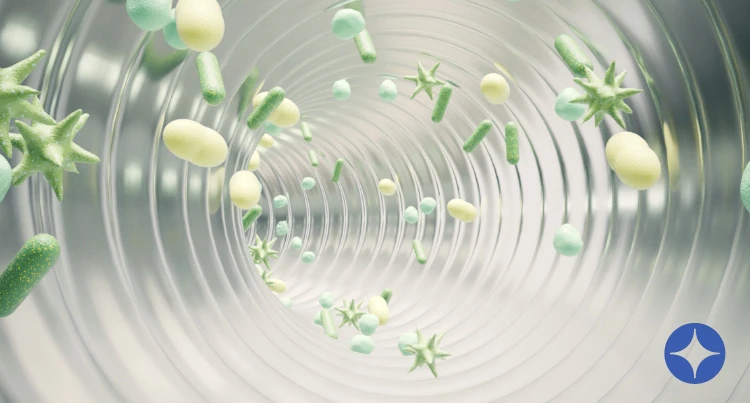
Bacteria Commonly Found in CPAPs and Potential Dangers
As a CPAP user, you must practice good hygiene and care so your sleep equipment is safe to use. Improper cleaning can allow various bacteria to colonize inside the mask, tubing, and water chamber, which can cause an infection. Depending on the type of bacteria, your health, and other factors, this could result in anything from a sinus infection to something serious like sepsis. The bacteria most often present in CPAPs include:
- Staphylococcus aureus is present on the skin and inside the nasal cavity in about a third of the population. Staph doesn't lead to illness in most cases, but can sometimes cause an infection and, in rare cases, become severe and life-threatening. A staph infection can look like a harmless skin condition like acne or boils.1
- Staphylococcus haemolyticus can cause severe infections, particularly in a healthcare setting. This bacteria is found on the skin and mucus membranes. It rarely causes infection, but requires swift treatment if illness occurs.2
- Staphylococcus hominis is another bacteria commonly found on the skin that typically doesn't cause harm but may sometimes form biofilms inside the body or cause infections like meningitis or infective endocarditis.3
- Pseudomonas aeruginosa is a bacteria that can cause infection in the lungs, blood, or urinary tract, usually following a surgical procedure. It's spread through person-to-person contact and by touching contaminated surfaces. Treatment consists of antibiotics but can be difficult as some types are resistant to these drugs.4
- Streptococcus pyogenes can cause infections ranging from mild irritation to throat infections to potentially life-threatening illnesses like toxic shock syndrome. Most non-invasive infections respond well to antibiotics.5
- Klebsiella aerogenes (formerly known as Enterobacter aerogenes) most frequently cause respiratory tract infections, infections after surgery, or UTIs. Like other bacteria, it's becoming antibiotic-resistant. Some infections are serious and can lead to death.6
- Escherichia coli is a common bacteria found in the intestines. It mostly causes a harmless bout of diarrhea, but stomach cramps and vomiting can also occur from eating contaminated food. Older adults have a risk of developing serious kidney failure. Anyone experiencing symptoms should see a doctor if they persist, worsen, or include bloody diarrhea.7
- Klebsiella pneumoniae live in the intestines but can spread to the lungs or other parts of the body and become serious. An infection can manifest as a cough, fever, or shortness of breath.8
Individuals with chronic health conditions are more susceptible to becoming ill from exposure to bacteria. If you have heart disease, diabetes, or another condition, avoid sharing personal items and take particular care to ensure all health equipment is clean before use.
How Bacteria Gets Into the CPAP
The CPAP mask sits on the skin of the face, coming into contact with any bacteria present. Even contaminated or dirty water can cause health issues, which is why you should never leave dirty water in the reservoir.9 It's also common for bacteria present in the mouth, throat, and lungs to enter into the CPAP mask and hose from normal use.10
How to Prevent Exposure to Bacteria from Your CPAP
You can prevent sickness from a contaminated CPAP machine by cleaning your equipment regularly and following all maintenance advice like replacing air filters, using only distilled instead of tap water, and changing the water often. The FDA recommends following the cleaning instructions given by the manufacturer. Most advise cleaning the mask, hose, and humidifier tank with mild soap and water. Some may recommend using a solution of vinegar diluted in water.10
What to Do If You Suspect You Have an Infection
If you use a CPAP and show signs of respiratory infection, you should see a healthcare provider to get a diagnosis and treatment if necessary. Symptoms may include:
- Cough
- Sore throat
- Shortness of breath
- Fever
- Chills
- Chest pain
- Headaches
- Body aches
Along with cleaning your sleep equipment, good hygiene practices like frequent hand washing, avoiding contact with people who are sick, and wearing a mask can all help lower the risk of getting an infection.11 By taking proper precautions, your risk of getting ill from a CPAP is low.
References
- CDC - Staphylococcus aureus Basics
- ScienceDirect - Staphylococcus Haemolytics
- ScienceDirect - Staphylococcus Hominis
- CDC - Pseudomonas aeruginosa
- NIH - Streptococcus Pyogenes
- WebMD - Klebsiella pneumoniae
- Mayo Clinic - E. coli
- Healthline - What You Need to Know About a Klebsiella Pneumoniae Infection
- Harvard Health Publishing - Can your CPAP make you sick?
- FDA - Do You Need a Device That Claims to Clean a CPAP Machine?
- Healthline - Can Your CPAP Machine Give You an Upper Respiratory Infection?




